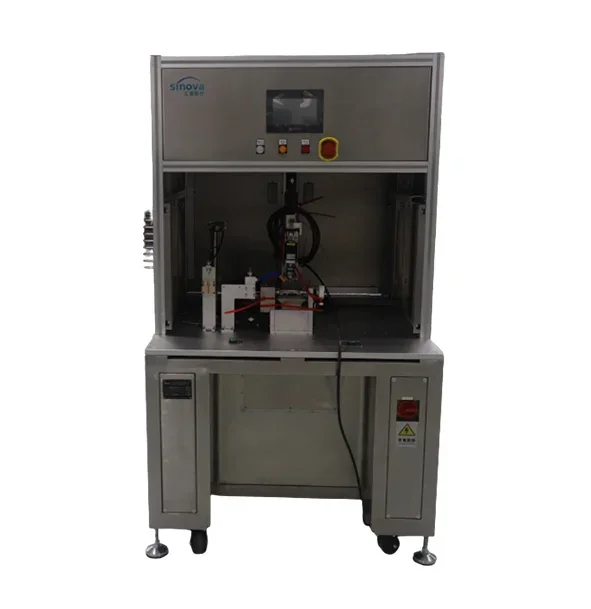Sheath punching equipment is a vital component in the manufacturing of medical devices, particularly in the creation of stents, catheters, and other minimally invasive tools. The precision and reliability of these machines are paramount to ensure the safety and efficacy of the end products. Suzhou Lieqi will share with you the routine maintenance of medical sheath punching equipment for sale to extend the service life of these critical machines and optimize their performance.
Understanding the Importance of Maintenance
Before we dive into the specifics, it's crucial to understand why routine maintenance is so important. Medical sheath punching equipment is subject to wear and tear, just like any other machinery. However, due to the high-stakes nature of medical device manufacturing, any malfunction or inaccuracy in the equipment can have severe consequences. Regular maintenance helps to:
1. Prevent Breakdowns: By identifying potential issues before they become critical, maintenance can prevent costly and time-consuming breakdowns.
2. Ensure Accuracy: Keeping the equipment calibrated and functioning optimally ensures the precision required for medical device manufacturing.
3. Extend Lifespan: Proper care can significantly extend the operational life of the equipment, saving on replacement costs.
4. Maintain Compliance: Regular maintenance is often a requirement for maintaining regulatory compliance in the medical device industry.

Key Components of Routine Maintenance
Now, let's explore the key components that should be included in a routine maintenance program for medical sheath punching equipment.
1. Visual Inspections
Regular visual inspections are the first line of defense against equipment failure. These should include:
- Checking for any visible signs of wear or damage.
- Inspecting for any loose or missing parts.
- Looking for any unusual build-up of debris or foreign materials.
2. Cleaning
Cleaning is a critical part of maintenance, as it helps to remove contaminants that can affect the performance of the equipment:
- Use appropriate solvents and cleaning agents to remove oils, grease, and other residues.
- Ensure that all cleaning is done in accordance with the manufacturer's guidelines to avoid damage to sensitive components.
3. Lubrication
Proper lubrication is essential for the smooth operation of moving parts:
- Apply the correct type and amount of lubricant as specified by the manufacturer.
- Lubricate all moving parts regularly to reduce friction and wear.
4. Calibration and Adjustment
Maintaining the calibration of the equipment is vital for ensuring the accuracy of the sheath punching process:
- Regularly check and adjust the calibration according to the manufacturer's specifications.
- Use precision measuring tools to ensure that all adjustments are made accurately.
5. Electrical and Pneumatic Checks
The electrical and pneumatic systems of the equipment should also be routinely checked:
- Inspect electrical connections for signs of wear or damage.
- Check for proper functioning of all electrical components, including motors and sensors.
- Ensure that pneumatic systems are functioning correctly, with no leaks or blockages.
6. Software Updates
Modern medical sheath punching equipment often relies on software to control operations:
- Keep the software up to date with the latest patches and updates.
- Regularly back up software configurations to prevent data loss.
7. Training and Documentation
Proper training and documentation are also key components of a successful maintenance program:
- Ensure that all maintenance personnel are adequately trained in the operation and maintenance of the equipment.
- Keep detailed maintenance records, including dates of inspections, parts replaced, and any issues encountered.
The Role of Preventative Maintenance
Preventative maintenance is the proactive approach to maintenance, aimed at identifying and addressing potential issues before they become serious problems. This approach can save time and money by:
- Reducing the likelihood of unexpected downtime.
- Minimizing the need for costly repairs.
- Prolonging the life of the equipment.
Conclusion
Routine maintenance of medical sheath punching equipment is an essential practice that cannot be overlooked. By following a comprehensive maintenance program that includes visual inspections, cleaning, lubrication, calibration, electrical and pneumatic checks, software updates, and training, manufacturers can ensure the precision, reliability, and longevity of their equipment. Moreover, a well-executed maintenance program can also help to maintain compliance with industry regulations, ultimately contributing to the production of safe and effective medical devices.
https://www.szlieqi.com/Routine-Maintenance-of-Medical-Sheath-Punching-Equipment.html
Lieqi
songyuhua@suzhoulieqi.com

